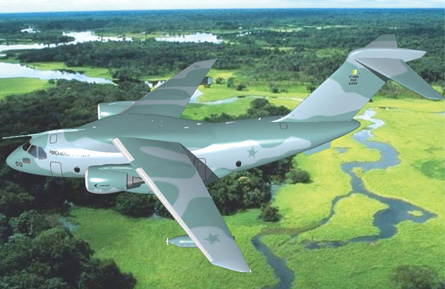Embraer will select industrial partners for its KC-390 transport based partly on the Brazilian government's economic and political priorities, says the company's top executive.
"We may or may not have partners in this programme, but this is a decision that will not be driven by Embraer only, nor by industrial or engineering needs," says chief executive Frederico Curado. "It will be driven by the commercial and geopolitical interests of the Brazilian government and ourselves."
 |
|---|
© EmbraerThe development programme includes a shift to an all-new design, including a T-tail |
Embraer's industrial partnership strategy has evolved dramatically since the KC-390 concept was first promoted two years ago.
The original plan was to reuse the E190 regional airliner's wingbox, engines, cockpit systems and tail. That strategy also assumed that Embraer would seek to maintain a common supplier network with the E190, Curado says.
However, Embraer gradually recognised that the commonality goal was producing a compromised design for a military airlifter.
In April, Brazil signed a $1.3 billion, 6.5-year contract with Embraer to develop two prototypes of the tanker-transport by 2015. The development programme includes a shift to an all-new design, including a T-tail and new, 27,000lb-thrust (120kN) engines, Curado says.
The development includes several "firsts" for the Brazilian airframer, including integrating a large cargo ramp, refuelling boom and receptacle, rugged landing gear and satisfying military icing requirements, Curado says.
Embraer will not seek to push technology with the KC-390 in other areas, such as composites, that could benefit its portfolio of commercial and business aircraft, he says. But the design is likely to benefit from a series of "pre-competitive investment" projects launched by the company three years ago.
"We want to be able to decide what is the best use of composites and aluminium or metal based only on customer requirements, and not on our ability to do it," says Curado.
Source: Flight International























